The SAM/SAH Ratio is one of the most powerful functional indicators of methylation efficiency in the human body. It represents the balance between S-Adenosylmethionine (SAM)—the body’s primary methyl donor—and S-Adenosylhomocysteine (SAH)—a byproduct that accumulates when methylation reactions slow down.
On the Neurotransmitter XL panel, this ratio provides deep insight into the methylation cycle’s performance, influencing neurotransmitter metabolism, detoxification, DNA regulation, hormone balance, and energy production. A high SAM/SAH ratio reflects robust methylation activity, whereas a low ratio signals methylation inefficiency, often tied to nutrient deficiency, oxidative stress, or metabolic slowdown.
This marker functions as a metabolic checkpoint—showing whether the body is efficiently transferring methyl groups (-CH3) to sustain biochemical reactions essential for mental health, energy, and cellular repair.
S-Adenosylmethionine (SAM) is synthesized from methionine and ATP, and donates methyl groups to hundreds of reactions in the body. These include:
Neurotransmitter synthesis and degradation (dopamine, serotonin, noradrenaline, histamine)
DNA methylation (gene regulation and epigenetic stability)
Phosphatidylcholine and creatine formation (cell membranes and energy balance)
Detoxification of hormones, xenobiotics, and heavy metals
After SAM donates its methyl group, it becomes S-Adenosylhomocysteine (SAH).
SAH is a potent inhibitor of all methyltransferase enzymes—the enzymes that transfer methyl groups. If SAH accumulates faster than it can be recycled back into homocysteine, methylation reactions slow or stall entirely.
Therefore, it’s not enough to have adequate SAM; the ratio of SAM to SAH determines actual methylation capacity.
Optimal methylation: High SAM, low SAH → efficient methyl transfers
Methylation block: Low SAM, high SAH → inhibited methylation
The SAM/SAH ratio is thus a direct reflection of the body’s ability to methylate effectively.
A balanced SAM/SAH ratio supports key systems throughout the body:
Neurotransmitter balance: Regulates dopamine, serotonin, and noradrenaline turnover through enzymes like COMT and MAO.
Mood and cognition: Adequate methylation supports stable mood, focus, and resilience to stress.
Liver detoxification: Methylation assists in processing hormones, drugs, and toxins.
DNA stability: Proper methylation patterns maintain genomic integrity and slow oxidative aging.
Energy and mitochondrial health: SAM contributes to ATP synthesis and redox balance.
A disrupted ratio impacts multiple pathways simultaneously, often leading to symptoms that span both the neurological and metabolic spectrum.
A low SAM/SAH ratio—meaning low SAM relative to elevated SAH—indicates sluggish methylation. This often arises when:
B-vitamin cofactors (B6, B12, folate, B2) are deficient
Oxidative stress or inflammation blocks enzymatic activity
Homocysteine clearance is impaired
Mitochondrial ATP production is insufficient to sustain SAM synthesis
The result is a biochemical bottleneck: methyl groups cannot be efficiently donated, leading to reduced synthesis of neurotransmitters, phospholipids, and antioxidants like glutathione.
Low folate (B9): Impairs methyl group supply via the methionine synthase pathway.
Vitamin B12 deficiency: Hinders homocysteine recycling, elevating SAH.
Vitamin B6 deficiency: Slows transsulfuration and increases methylation pressure.
Riboflavin (B2): Needed for MTHFR enzyme activity that generates methyl donors.
These deficiencies often coexist, leading to reduced SAM formation and elevated SAH accumulation.
High oxidative load from chronic inflammation, infection, or toxin exposure oxidizes BH4 (tetrahydrobiopterin) and disrupts methylation enzymes. The resulting oxidative stress diverts methyl groups toward antioxidant defense (e.g., glutathione synthesis), lowering SAM availability.
Markers like neopterin on the Neurotransmitter XL panel can confirm immune-driven methylation strain.
SAM synthesis requires adenosine triphosphate (ATP). Low energy production (due to mitochondrial dysfunction or nutrient depletion) reduces methylation throughput. Associated markers like lactate, pyruvate, and citrate often reveal this energetic insufficiency.
When homocysteine isn’t efficiently recycled to methionine (via folate-B12 pathways) or converted through transsulfuration (via B6), it builds up—and so does SAH. Elevated SAH then inhibits methyltransferases, creating a feedback block in methylation flow.
Polymorphisms in MTHFR, MTR, MTRR, COMT, or BHMT genes can reduce enzyme efficiency within methylation pathways, lowering SAM/SAH ratio despite adequate nutrient intake.
Neurological and Emotional Symptoms:
Low mood or depression
Brain fog and poor focus
Anxiety or irritability
Fatigue and low stress tolerance
Poor sleep or non-restorative rest
Systemic and Metabolic Symptoms:
Elevated homocysteine
Sluggish detoxification (sensitivity to alcohol, caffeine, or medication)
Hormonal imbalance (e.g., estrogen dominance)
Fatty liver or poor lipid metabolism
Chronic fatigue or mitochondrial dysfunction
Because methylation underpins so many systems, a low ratio can manifest in diverse ways—from mood changes to metabolic inefficiency.
A high SAM/SAH ratio is less common but can occur when methylation activity is excessive or when SAH levels are unusually low. This may be seen with over-supplementation of methyl donors (e.g., SAMe, methylfolate, or betaine), or in states of low homocysteine. While a high ratio may seem beneficial, excessive methylation can overactivate certain pathways, potentially leading to irritability, anxiety, or overstimulation.
| Related Marker | Interpretation Insight |
|---|---|
| S-Adenosylmethionine (SAM) | Low SAM contributes directly to a reduced ratio; evaluate B12, folate, and ATP availability. |
| S-Adenosylhomocysteine (SAH) | Elevated SAH strongly inhibits methylation enzymes, lowering the ratio. |
| Homocysteine | Elevated levels reflect impaired recycling, often correlating with high SAH. |
| Methylmalonic Acid | Elevated levels indicate B12 deficiency slowing methionine synthesis. |
| Neopterin | High values suggest immune activation consuming methylation resources. |
| NAD+ / Redox Markers | Low NAD+ impairs mitochondrial ATP production needed for SAM synthesis. |
| Methionine / Betaine | Low levels indicate reduced methyl donor input, further depressing SAM/SAH ratio. |
Interpreting these together clarifies whether the methylation inefficiency is driven by nutrient depletion, inflammation, or energetic constraint.
A persistently low SAM/SAH ratio can contribute to:
Depression and cognitive decline (low methylation of neurotransmitters and phospholipids)
Chronic fatigue and poor energy metabolism
Elevated homocysteine and cardiovascular risk
Hormonal imbalance and detoxification issues
Accelerated oxidative aging (due to low glutathione and DNA methylation capacity)
Neurodegenerative vulnerability (from reduced methylation of neural lipids and DNA repair genes)
In contrast, a well-balanced SAM/SAH ratio supports emotional stability, efficient energy metabolism, and cellular repair capacity.
Ensure sufficient intake of:
Folate (5-MTHF) – restores methyl donor supply
Vitamin B12 (methylcobalamin or adenosylcobalamin) – recycles homocysteine
Vitamin B6 (P5P) – drives transsulfuration
Riboflavin (B2) and magnesium – activate methylation enzymes
Methionine-rich proteins (fish, eggs, lentils, nuts)
Choline and Betaine (TMG) – support BHMT pathway
SAMe supplementation – may help restore balance under medical supervision
Include antioxidants (vitamin C, NAC, glutathione, CoQ10, alpha-lipoic acid)
Address underlying inflammation or infections that drain methylation reserves
Support redox recovery with NAD+ boosters and mitochondrial nutrients
Enhance ATP generation with CoQ10, L-carnitine, and magnesium
Prioritize restorative sleep and nutrient-dense meals to sustain cellular energy
For those with a high SAM/SAH ratio, reduce excessive methyl donors and reassess the need for supplements under clinician guidance to avoid overstimulation or anxiety symptoms.
The SAM/SAH Ratio is the body’s biochemical “methylation scorecard.” A low ratio reflects methylation inefficiency—often due to nutrient depletion, oxidative stress, or mitochondrial strain—leading to low energy, mood instability, and metabolic sluggishness. A balanced ratio supports neurotransmitter regulation, DNA repair, detoxification, and healthy gene expression.
On the Neurotransmitter XL panel, the SAM/SAH ratio integrates signals from SAM, homocysteine, betaine, folate, B12, and mitochondrial markers, offering a holistic view of your methylation health.
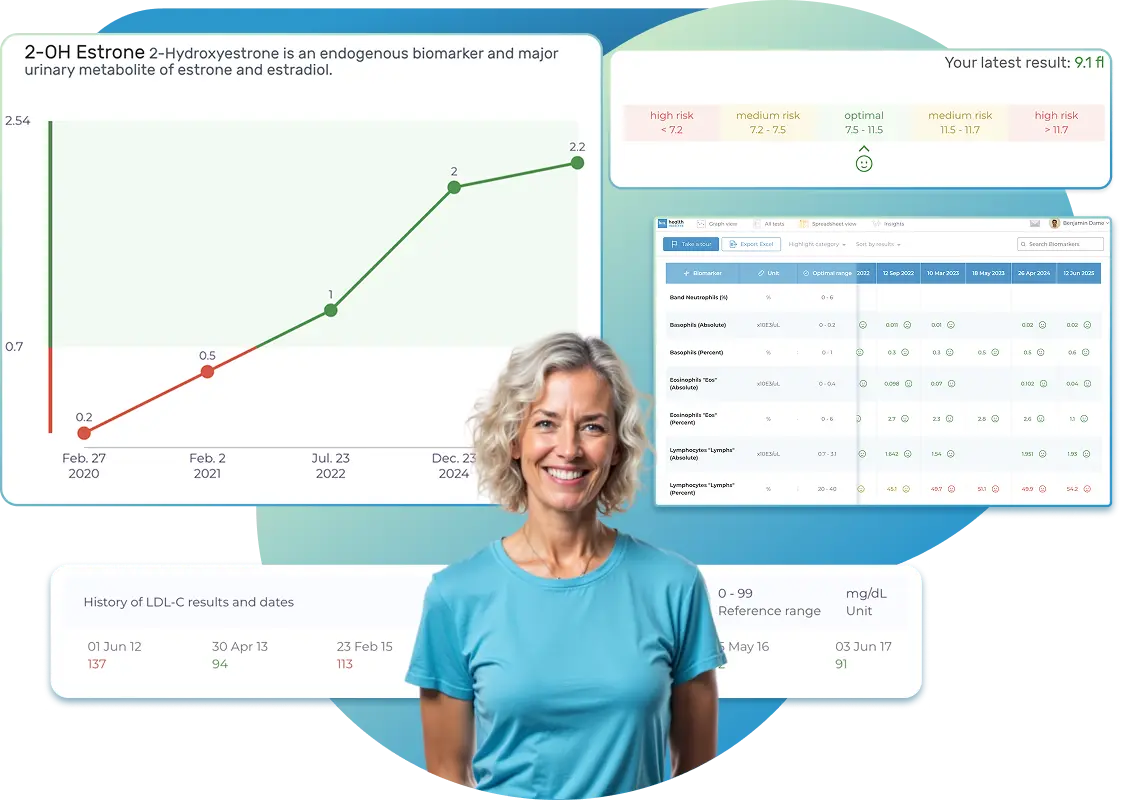
Import lab results from multiple providers, track changes over time, customize your reference ranges, and get clear explanations for each result. Everything is stored securely, exportable in one organized file, and shareable with your doctor—or anyone you choose.
Cancel or upgrade anytime
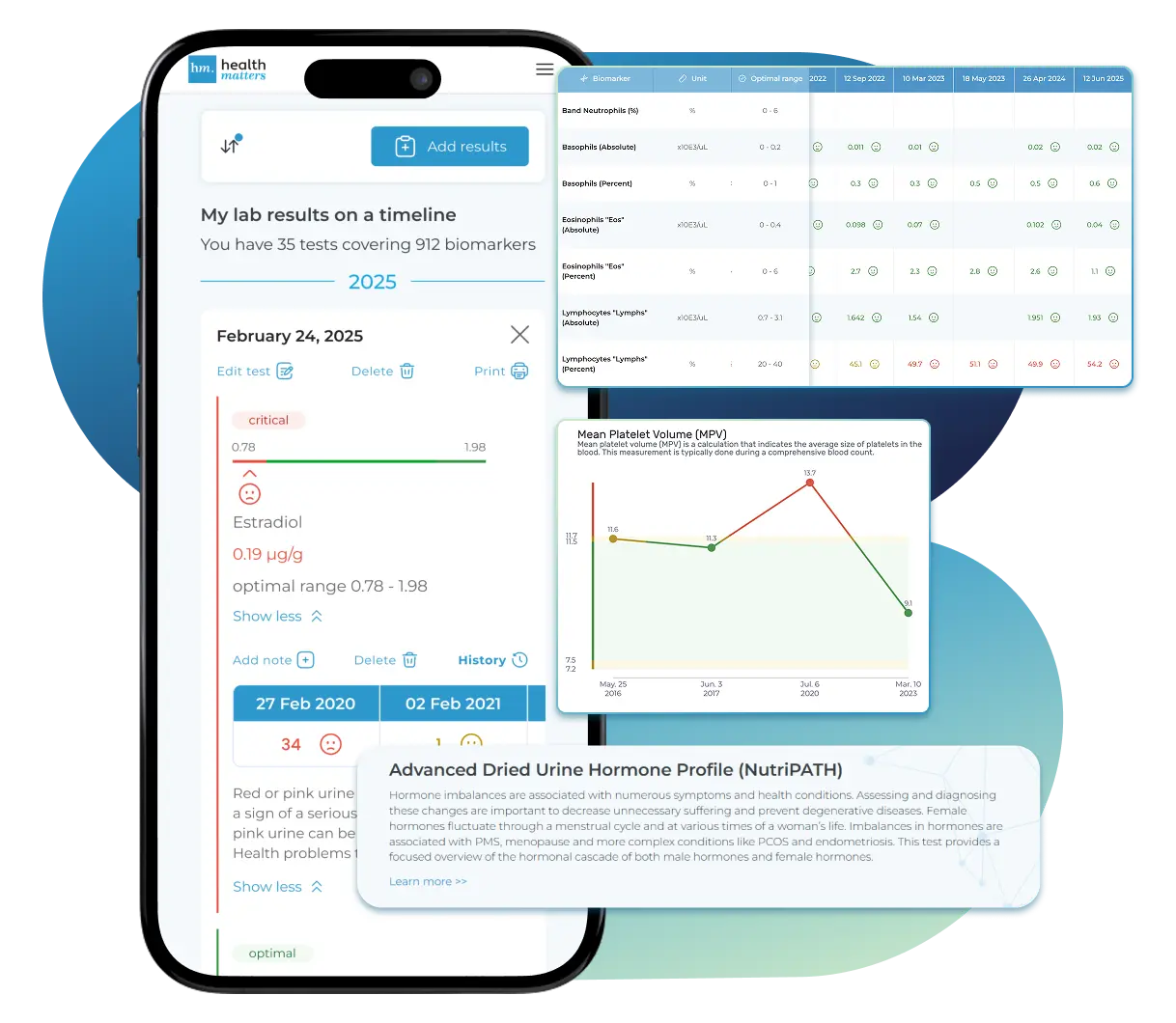
A low SAM/SAH ratio on the Neurotransmitter XL panel indicates reduced methylation efficiency, meaning your body is struggling to transfer methyl groups (-CH3) needed for hundreds of vital biochemical reactions. This imbalance reflects a state where S-Adenosylmethionine (SAM)—the body’s universal methyl donor—is insufficient or S-Adenosylhomocysteine (SAH) has accumulated to inhibitory levels.
Because methylation supports processes such as neurotransmitter regulation, detoxification, DNA stability, hormone metabolism, and energy production, a low ratio signals that these systems may be underperforming. In practical terms, this can manifest as low energy, mood disturbances, slow detoxification, and increased oxidative stress.
Methylation reactions rely on a steady supply of SAM, generated from methionine and ATP, and on the rapid clearance of SAH, which forms after SAM donates its methyl group. When SAH builds up or SAM production declines, methyltransferase enzymes are inhibited, slowing methylation throughout the body.
A low SAM/SAH ratio therefore means:
Low SAM availability → reduced methyl group donation
High SAH accumulation → enzyme inhibition and metabolic congestion
The result is methylation stagnation, reducing the body’s ability to create neurotransmitters, regulate genes, recycle homocysteine, and maintain redox balance.
Methylation depends on several vitamins and cofactors:
Folate (B9) – provides methyl groups via 5-MTHF
Vitamin B12 – recycles homocysteine to methionine
Vitamin B6 – drives transsulfuration and neurotransmitter synthesis
Riboflavin (B2) – activates the MTHFR enzyme
Magnesium and zinc – stabilize enzyme activity
Insufficiency in any of these nutrients can reduce SAM synthesis or slow SAH clearance.
If homocysteine is not efficiently recycled due to low folate or B12, it accumulates alongside SAH, directly inhibiting methylation enzymes. This biochemical feedback loop leads to progressively lower SAM/SAH ratios and sluggish detoxification.
SAM synthesis requires adenosine triphosphate (ATP). When mitochondrial energy production is impaired—due to stress, nutrient depletion, or oxidative damage—the body cannot generate sufficient SAM, lowering the ratio. Related markers like lactate, pyruvate, and citrate often confirm this energetic strain.
Inflammation increases oxidative demand and diverts methyl groups toward antioxidant production (like glutathione), depleting SAM. Elevated neopterin or kynurenine pathway activity on the Neurotransmitter XL panel can indicate immune-driven methylation strain.
Common polymorphisms in MTHFR, MTR, MTRR, COMT, or BHMT genes can impair methylation efficiency even with adequate nutrient intake, making individuals more prone to low SAM/SAH ratios.
Reduced synthesis of dopamine, serotonin, and norepinephrine, leading to low mood, brain fog, or fatigue
Impaired breakdown of stress neurotransmitters (due to reduced COMT and MAO activity)
Mood instability or poor stress resilience
Elevated homocysteine, increasing cardiovascular risk
Fatty liver or sluggish detoxification (reduced phosphatidylcholine synthesis)
Hormonal imbalance, especially estrogen dominance
Impaired DNA methylation and gene expression control
Reduced mitochondrial ATP output
Greater oxidative and nitrosative stress
Depletion of glutathione and impaired antioxidant recycling
The combined impact often presents as a pattern of low energy, emotional flatness, and metabolic congestion—a hallmark of underactive methylation.
| Related Marker | Interpretation Insight |
|---|---|
| S-Adenosylmethionine (SAM) | Low SAM confirms methyl donor insufficiency. |
| S-Adenosylhomocysteine (SAH) | Elevated SAH strongly inhibits methylation enzymes. |
| Homocysteine | Elevated levels correlate with poor methylation throughput. |
| Methylmalonic Acid (B12 status) | High levels reflect B12 deficiency slowing methionine recycling. |
| Betaine and Choline | Low levels indicate reduced methyl group support through BHMT pathway. |
| Neopterin | Elevated values suggest inflammation consuming methylation cofactors. |
| NAD+ and Energy Markers | Low NAD+ and elevated lactate/pyruvate imply energy deficits limiting SAM synthesis. |
Integrating these results helps determine whether the low SAM/SAH ratio stems from nutrient depletion, oxidative load, or mitochondrial dysfunction.
Neurological / Emotional:
Fatigue and low motivation
Brain fog, poor focus, or slow processing
Depressed mood or apathy
Anxiety or irritability
Non-restorative sleep
Systemic / Metabolic:
Poor detoxification or alcohol intolerance
Hormonal imbalance (e.g., PMS, estrogen dominance)
Elevated homocysteine
Liver strain or fatty liver
Increased oxidative stress and inflammation
A persistently low SAM/SAH ratio suggests that methylation—and therefore detoxification, neurotransmitter regulation, and DNA repair—are compromised. Left uncorrected, this biochemical bottleneck can contribute to:
Mood disorders (depression, anxiety, fatigue)
Cognitive decline and memory issues
Elevated homocysteine and cardiovascular risk
Mitochondrial dysfunction and energy deficits
Increased oxidative damage and cellular aging
Correcting methylation inefficiency typically improves energy, focus, and resilience, and reduces toxic or inflammatory burden.
Folate (as 5-MTHF) – Restores methyl group supply
Vitamin B12 (methylcobalamin or adenosylcobalamin) – Recycles homocysteine
Vitamin B6 (P5P) – Supports transsulfuration and neurotransmitter synthesis
Riboflavin (B2) – Activates MTHFR enzyme
Magnesium and zinc – Stabilize methyltransferase activity
Choline and Betaine (TMG): Support BHMT pathway to remethylate homocysteine
Methionine-rich foods: Fish, eggs, lentils, nuts
SAMe supplementation: Can directly boost methylation under clinical guidance
Include antioxidants (vitamin C, NAC, alpha-lipoic acid, CoQ10) to counter oxidative stress
Boost NAD+ levels (niacinamide, NMN, or niacin) to enhance energy-driven methylation
Promote mitochondrial recovery with L-carnitine, magnesium, and steady aerobic activity
Address chronic infections, gut inflammation, or toxic exposures
Adopt relaxation practices (mindfulness, restorative sleep, balanced exercise)
Ensure sufficient omega-3 fatty acids (EPA/DHA) to stabilize cellular signaling
A low SAM/SAH ratio reflects methylation slowdown, often due to nutrient depletion, oxidative stress, or mitochondrial strain. This imbalance impairs neurotransmitter regulation, detoxification, and cellular energy, manifesting as low mood, fatigue, and reduced stress resilience.
By addressing underlying deficiencies in B vitamins, methyl donors, and energy metabolism, and supporting antioxidant defense, methylation efficiency—and overall vitality—can often be restored.
Laboratories
We accept reports from any lab, so you can easily collect and organize all your health information in one secure spot.

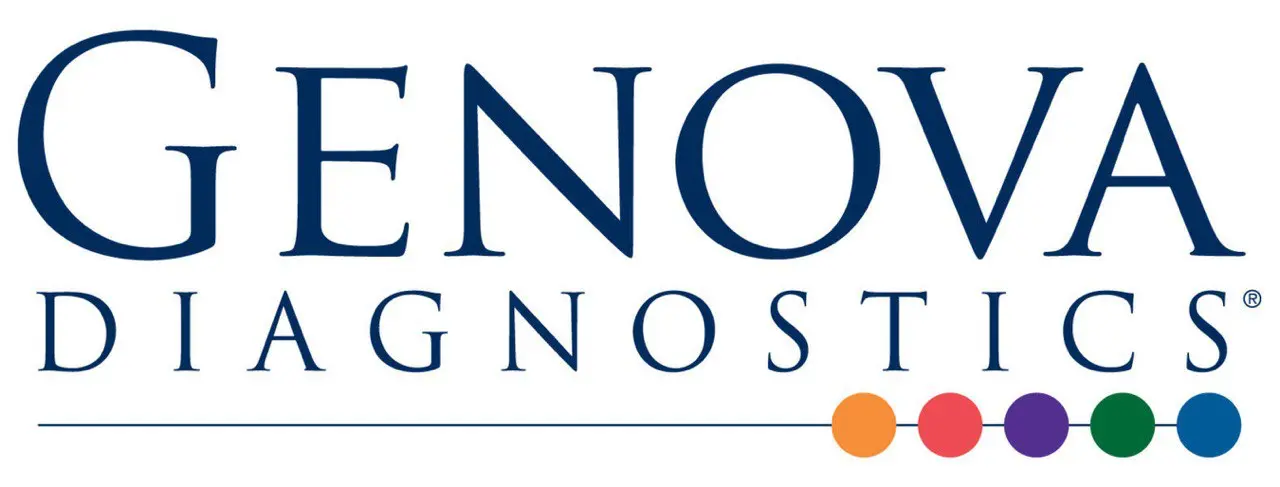


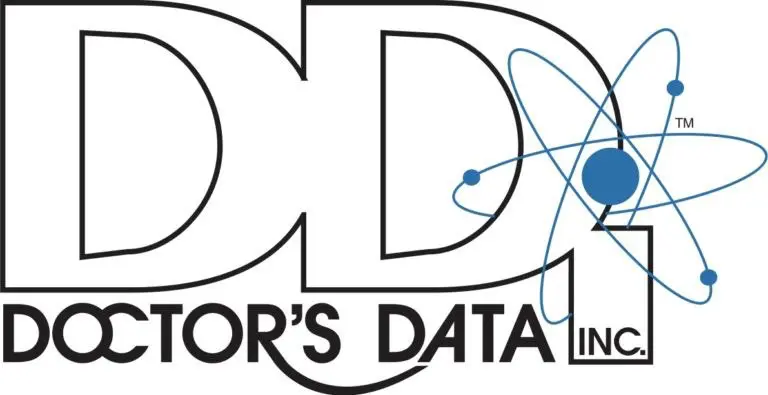





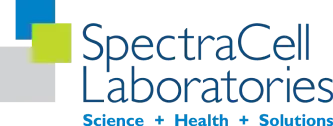
Pricing Table
Choose the plan that fits you — and turn scattered lab reports into clear insights you can finally use.
Pick a plan that fits you — and turn scattered lab reports into clarity.
Personal plans
Professional plan
$15/ month
Access your lab reports, explanations, and tracking tools.
$250/ once
Pay once, access everything—no monthly fees, no limits.
Professional plan
$45/ month
Designed for professionals managing their clients' lab reports
About membership
 Import Lab Results from Any Source
Import Lab Results from Any Source
Easily upload lab results from any provider, whether it's a hospital, independent lab, or home testing service. We support PDFs, scanned documents, and JPEGs from patient portals. No need to log in to multiple platforms — everything is centralized in one secure space.
Easily upload lab results from any provider — we support PDFs, scans, and images. Keep all your reports organized in one secure place.
 See Your Health Timeline
See Your Health Timeline
Every lab result is automatically organized on a chronological timeline, giving you a complete picture of your health journey. Whether you're tracking a condition, managing treatments, or staying proactive, the timeline helps you and your doctor understand how things progress over time.
Every lab result is automatically organized on a chronological timeline, giving you a complete picture of your health journey.
 Understand What Your Results Mean
Understand What Your Results Mean
Whether it's a blood test, GI panel, urinalysis, or something else, lab reports measure numerous biomarkers that reveal what's happening inside your body. Our extensive database covers over 10,000 biomarkers, providing clear, simple explanations of what each result means and how you can take action—no matter your membership level. Say goodbye to confusion and get the insights you need to better understand your health.
Our database covers over 10,000 biomarkers with clear, simple explanations—so you can finally understand your results and what to do next.
 Enter Your Lab Reports Yourself — Always Free
Enter Your Lab Reports — Always Free
Enter Your Lab Reports Yourself — Always Free
Enter Your Lab Reports — Always Free
If you'd like to handle inputting your health data into your account, you can do so with our easy-to-use data entry forms. Our user-friendly form is designed to guide you through the quick and easy submission process, making it simple to keep track of your health metrics. This is available to both Complete plan and Unlimited plan members.
Our user-friendly form guides you through a quick, simple submission process, making it easy to enter your health metrics.
Add your results anytime with our easy entry form. It's quick, guided, and helps you stay organized — free for all members.
 Visualize Your Results
Visualize Your Results
View your lab data through easy-to-read graphs and tables. Quickly spot patterns, track changes, and compare results across different dates — all without digging through multiple reports. You can also select and compare graphs of specific biomarkers side-by-side to better understand how they relate and change over time.
See your lab reports in clear graphs and tables. Spot patterns, track changes, and compare results over time — all in one place.
 Export Your Complete Lab History in a Single File
Export Your Complete Lab History
Export Your Complete Lab History in a Single File
Export Your Complete Lab History
After collecting lab results from different providers, you can download your entire history combined into a single file. Choose from PDF, Excel, or CSV formats to easily review, share, or get a second opinion—no more juggling multiple reports.
After collecting lab results from different providers, you can download your entire history combined into a single file.
 Comprehensive Data Entry Service for Your Reports
Data Entry Service for Your Reports
Comprehensive Data Entry Service for Your Reports
Data Entry Service for Your Reports
Our inclusive service handles the data entry for your lab reports. Just submit your information and we'll take care of the rest. Complete plan members receive one report entered for free, then $15 per report after that. Unlimited plan members receive ten report entries for free, then $15 per report after that.
Our inclusive service handles the data entry for your lab reports. Just submit your information and we'll take care of the rest.
 Securely Share With Anyone You Trust
Securely Share With Anyone You Trust
Whether you're working with a doctor, nutritionist, caregiver, or wellness coach, you can securely share your complete lab history by sending an invite link to anyone you trust. You have full control over who sees your information and for how long, ensuring your privacy and peace of mind at every step.
Share your full lab history with your doctor, nutritionist, or coach using a secure invite link.
Discover






I have been using Healthmatters.io since 2021. I travel all over the world and use different doctors and health facilities. This site has allowed me to consolidate all my various test results over 14 years in one place. And every doctor that I show this to has been impressed. Because with any health professional I talk to, I can pull up historical results in seconds. It is invaluable. Even going back to the same doctor, they usually do not have the historical results from their facility in a graph format. That has been very helpful.
Anthony
Unlimited Plan Member since 2021

What fantastic service and great, easy-to-follow layouts! I love your website; it makes it so helpful to see patterns in my health data. It's truly a pleasure to use. I only wish the NHS was as organized and quick as Healthmatters.io. You've set a new standard for health tracking!
Karin
Advanced Plan Member since 2020

As a PRO member and medical practitioner, Healthmatters.io has been an invaluable tool for tracking my clients' data. The layout is intuitive, making it easy to monitor trends and spot patterns over time. The ability to customize reports and charts helps me present information clearly to my clients, improving communication and outcomes. It's streamlined my workflow, saving me time and providing insights at a glance. Highly recommended for any practitioner looking for a comprehensive and user-friendly solution to track patient labs!
Paul
Healthmatters Pro Member since 2024
Healthmatters is a personal health dashboard that helps you organize and understand your lab results. It collects and displays your medical test data from any lab in one secure, easy-to-use platform.
With a Healthmatters account, you can:
Professionals can also analyze client data more efficiently and save time managing lab reports.
Healthmatters.io personal account provides in-depth research on 4000+ biomarkers, including information and suggestions for test panels such as, but not limited to:
You can combine all test reports inside your Healthmatters account and keep them in one place. It gives you an excellent overview of all your health data. Once you retest, you can add new results and compare them.
If you are still determining whether Healthmatters support your lab results, the rule is that if you can test it, you can upload it to Healthmatters.
While we work with many popular labs, we welcome reports from lots of other places too.
It's as simple as this: if you can get a test done, you can upload it to Healthmatters and we can interpret results from any lab out there. If laboratories can analyze it, we can interpret it.
If you're on the hunt for a specific biomarker, contact us and we'll add it to our database. Anything from blood, urine, saliva, or stool can be uploaded, understood, and tracked with your Healthmatters account.
The Complete Plan ($15/month) is perfect for individuals who want ongoing access to their health data. It includes unlimited lab imports, visual tracking, custom ranges, result explanations, full account exports, and secure sharing — all with a simple monthly subscription. You can cancel anytime and restart your plan whenever you're ready — your data will still be there waiting for you. You can also upgrade to the Unlimited Plan at any time, with the cost prorated based on what you've already paid.
The Unlimited Plan ($250 one-time) is also designed for individuals but offers lifetime access with no ongoing subscription. You'll get all the same features as the Complete Plan, plus a larger initial data entry allowance (10 reports), making it a great choice if you prefer a one-time payment and long-term use without monthly fees.
In short:
There are two ways to add your test reports to your Healthmatters account. One option is to input the data using the data entry forms. The other method is to utilize our "Data entry service."
Our data entry forms offer an easy, fast, and free way for you to input the reports yourself. Self-entry allows you to add an unlimited number of reports at no cost. We make the self-entry process user-friendly, providing dozens of templates that pre-populate the most popular laboratory panels and offering instant feedback on entered values.
For those who prefer assistance, we offer a "Data entry service" to help you input your data. Simply attach an image or file of your lab test results, and a qualified team member from our data entry team will add the results for you.
We support various file types, including PDFs, JPGs, or Excel. This service is particularly useful if you have many reports to upload or if you're too busy to handle the data entry yourself.
Our Data Entry Service is for when you don't want to manually type in your lab results yourself. You simply upload your report (PDF, image, or screenshot), and our trained team enters the information into your Healthmatters account for you — accurately and neatly organized, ready to view in graphs, tables, and timelines.
The $15 per report covers the time and care it takes for a real person to review your file, make sure each result is entered correctly, and double-check for accuracy. This ensures your health data is precise and easy to work with — without you having to spend the time doing it yourself.
Prefer to do it yourself? You can always use our free self-entry tool to add results manually — it just takes a bit more time and attention.
For users on the Complete monthly plan, the first report is entered free of charge, and each additional report incurs a fee of $15.
Unlimited account holders enjoy the entry of ten reports without charge. Subsequent reports are subject to a $15 fee per report.
Additionally, users on the Complete plan can upgrade to a yearly subscription from the account settings. The annual subscription includes a data entry service for five reports.
All professional accounts allow you to import and onboard an unlimited number of clients and their lab results. The distinction between professional plans lies solely in the data entry service.
The Pro Monthly Plus plan is priced at $75 per month and includes a data entry service for five reports each month. Additional reports can be self-entered at no extra cost or, if preferred, you can use our data entry service for an additional fee of $15 per report.
The Pro Monthly plan is priced at $45 per month and does not include a data entry service. Self-entry is free for an unlimited number of reports, and you can opt for the data entry service at a fee of $15 per report.
You also have the option to upgrade to higher monthly or to annual plans, which come with substantial discounts. All upgrades can be done directly from your account.
Simply log in and navigate to your account settings to cancel your subscription. Scroll down to locate the 'Cancel' button at the bottom of the page. Ensure you cancel at least one day before the renewal date to prevent any charges. Once cancellation is requested, the subscription remains active until the conclusion of the current billing cycle.
Our goal has been to make your Healthmatters account as intuitive as possible.
We've crafted multiple ways for you to navigate your data, whether you're glancing at a single report or delving into your historical test reports.
1. Graph View:Dive into a visual journey with our biomarker graphs, showcasing over 40 data points. Combining years of results unveils trends, empowering you to make informed decisions. Our visualization tools make it a breeze to compare and understand changes over time, even if your results are from different labs. A search function and filters simplify the exploration of extensive data, allowing you to focus on what needs attention.
2. All Tests ViewExplore neatly organized reports on a timeline, highlighting crucial details like dates, critical results, and lab/panel names. Each report opens up to reveal in-depth descriptions and additional recommendations for each biomarker. The history of previous results is just a click away, and you can download a comprehensive report for deeper insights. Color-coded and user-friendly, it's designed for easy reading, understanding, and navigation.
3. Table View:For a holistic view of all biomarkers side by side, our table view is your go-to. Results are neatly displayed in a categorized and dated table, ideal for those with an extensive test history. Utilize sorting, filters, and color-coding to enhance your analysis and gain extra insights.
Yes, you can download your information anytime. We offer two easy ways to export your lab data:
This makes it simple to save, back up, or share your health data whenever you need.
Yes, you can print your report. To do so, navigate to "All tests" and open the report you wish to print. You'll find a print button in the right corner of the report. Click on it, and your browser's print window will open. If you prefer to print in a bigger typeface, adjust the scale using the print window settings.
Yes, you can! We highly recommend activating Two-Factor Authentication (2FA) for your account. To do so, please navigate to the "Profile and Security" section of your account, where you will find instructions for activating 2FA.
Yes, you can. When entering values for the biomarker, you will see an "Edit Range" button. Click this button, and you'll have the option to enter a custom range.
A personal account is all about keeping your own lab test results in check. It's just for you and your personal use.
The professional account is designed for health professionals who wish to track and organize their clients' laboratory results.
To learn more about Healthmatters Pro, please refer to the professional page.
At HealthMatters, we're committed to maintaining the security and confidentiality of your personal information. We've put industry-leading security standards in place to help protect against the loss, misuse, or alteration of the information under our control. We use procedural, physical, and electronic security methods designed to prevent unauthorized people from getting access to this information. Our internal code of conduct adds additional privacy protection. All data is backed up multiple times a day and encrypted using SSL certificates. See our Privacy Policy for more details.

